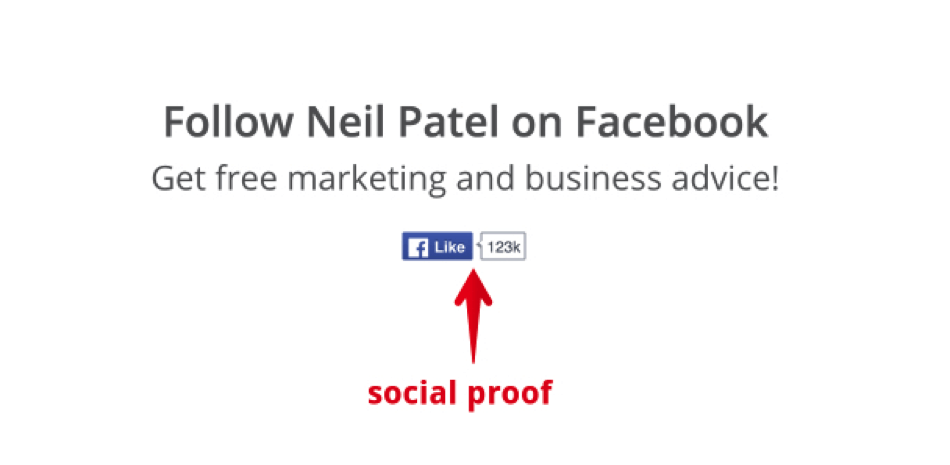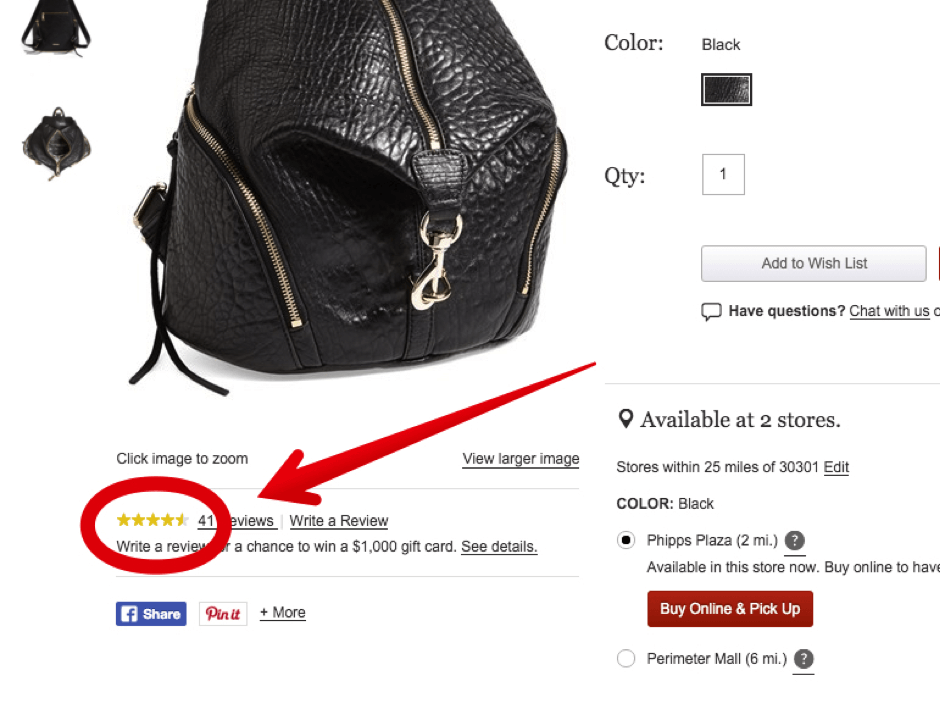Social proof is a powerful marketing technique that can easily boost your sales, improve your reputation, and increase your website’s influence and power.
So why aren’t more people using it?
Part of the reason is this: Most marketers don’t truly understand what social proof is.
What is social proof?
Most of us are familiar with the techniques of social proof.
One of the most common techniques is posting social media following metrics along with follow buttons.
Here is a screenshot of Social Media Examiner’s homepage.

When you look at those numbers, you may think, “Hmm. There are a lot of people following Social Media Examiner on social media. I think I’ll do the same!”
My website includes a Facebook call to action. The idea is that people will see others who have liked my group and feel compelled to join themselves.

These are types of social proof.
But there is much more! To really unleash the power of social proof, we need to understand it at a deeper level — beyond the tactics.
Here’s a good working definition of social proof:
Social proof means that people will copy others’ actions, assuming it’s the right thing to do.
For example, let’s say you are going through the gates at Disney World. Hundreds of people are lined up behind one gate, but nobody is lined up behind a second gate.
As you approach that gate, you’re subconsciously processing the situation:
“More people are lined up behind this gate. Therefore, it must be the correct gate. I see a second gate, but no one is there. For some reason, I shouldn’t use that gate.”
Chances are, you’re doing the right thing by following the crowd.
But you’re doing just that — following the crowd. This is the essence of social proof, and it also explains why it’s so powerful.
Social proof is so powerful that you’ll do things without a rational explanation.

Image Source
Social proof isn’t just some marketing gimmick. It’s a psychological force that compels people to do things — sometimes stupid, sometimes dangerous, sometimes healthy.
An explanation from Wikipedia deepens our understanding of social proof:
This effect is prominent in ambiguous social situations where people are unable to determine the appropriate mode of behavior, and is driven by the assumption that surrounding people possess more knowledge about the situation.
Here’s the crazy thing about social proof.
Often, other people are wrong.
But still, we follow them, because we’re compelled by this psychological force of social proof.
What if that gate with no line is actually open? What if you could just go through it, without having to wait?
What if you’re actually standing in a queue to buy tickets, even though you already have tickets?
You’ve made a whole series of assumptions based on others’ activities.
When you apply this information to your marketing efforts, you begin to see its power.
- Without social proof, people may assume that your product or service lacks
- With social proof, people will assume that your product or service possesses
You can’t really market effectively unless you are employing the power of social proof.
Here’s why social proof is so crucial for ecommerce stores
We are, to repeat a cliché, social creatures.
This fact alone means that social proof is important.
But let’s analyze it on a deeper level and begin to apply it to your ecommerce store.
- People are making a choice to buy or not buy a given item.
- Every time a person makes a choice, it introduces some degree of anxiety. This “purchase anxiety” is normal, and it affects both large and small purchases.
- To dispel that anxiety, we look to the actions of others. We want to know that other people have shared our experience. More importantly, we want to know that the choice we are making is the choice that other people have made.
Entrepreneur magazine makes this point about online shopping:
Online shoppers tend to suffer from purchase anxiety more than offline shoppers. After all, when you buy something over the internet, it’s often a product you’ve never seen before sold by a person you’ve never met before.
If your marketing consists of your telling the customer, “We’re awesome. Our product is great! Go ahead and buy!” then you might get some customers.
But the customer floodgates will open only when you have proof that there is an entire social group of people who have chosen your product and are pleased with their choice.
Social Proof Examples
This is the simple premise of social proof: If person A buys a product, then persons B, C, and D are more likely to buy that product, too.
Here’s an example.

McDonald’s isn’t an ecommerce store, but they compel people to visit their restaurants with a simple social proof slogan: “Billions served.”

The assumption is, “So many people can’t be wrong! I’ll do it too!”
You may have even heard such a slogan as the name of an album:

Image Source
Or an album that attempts to one-up it with twice as much social proof:

You get the idea.
The bottom line is this.
People don’t trust you, can’t trust you, and won’t trust you unless you have social proof.
And if they don’t trust you, they won’t buy.
And if they won’t buy, you’re out of business.
You need social proof in your ecommerce store if you want to survive.
Here are some methods of building your social proof.
This brings me to the climactic and tactics-oriented section of this post. Thanks for sticking with me.
I think it’s important to lay the foundation of social proof before we start to discuss tactics. Unless we understand the human motivations behind social proof and the absolute importance of building it, our tactics will be meaningless, haphazard, and unfocused.
So, what are those tactics?
Know your customers.
Doesn’t sound like much of a tactic, huh?
The truth is, that’s where all successful marketing tactics begin — with the customer in mind.
The social proof methods that work for some people might not be as effective with others. Your job is to understand the things that interest, motivate, and compel your customers. Use these features and characteristics to build your strategy for social proof.
Encourage customer conversation on social media.
Obviously, social media is one of the critical forces in building trust. Use your social media channels to sustain conversation among your customers.
Many people mistakenly view social media as a broadcasting platform. It’s not. It’s an interactive platform, designed for the give and take of information.
When your customers engage in this give and take, it serves to build social proof for your store.
Use a Q&A section.
Amazon does a great job of adding information to their social proof. They realize that customers aren’t merely lemmings, following the crowd. Instead, savvy customers are asking questions and demanding answers.
Enter the “Customer Questions & Answers” section on each product page. Customers can ask product-related questions and get answers.

Add star ratings.
Star ratings are one of the most popular and effective ways of building social proof. Not only do they indicate the social attraction of a given item, but they also suggest its quality and value.
This product page from Nordstrom provides a clear example of how this technique can be implemented on product pages.

Nike’s website uses this method as well, but focuses on the reviews that customers leave.

Allow customers to leave reviews.
One of the most compelling forms of social proof is the customer review. Some hesitant ecommerce store owners view this as a risky tactic. What if the customer hates the product and rips it to pieces in their review?
Yes, there is a risk. But the reward of social proof far outweighs any risk.
Reviews and ratings are so important for most retailers that they are built into the ranking algorithm. Amazon is the most famous example of this. Some businesses create opt-in groups that invite users to exchange reviews (favorable or not) for free or discounted products.
Customer reviews demonstrate that people are using, interacting with, and experiencing the product.

Amazon, clearly a leader in the social proof arena, also allows customers to upload videos and photos.

Media mentions
An active outreach and media strategy is another powerful way of boosting your social proof. When your product or website is mentioned on another well-known platform, it’s a good idea to leverage this as social proof.

Create an “in-group.”
Peer pressure is a form of social proof. The “everybody’s doing it” mentality or “cool kids club” makes you feel less than awesome if you aren’t buying a particular product, wearing a specific style, or acting a certain way.
Why do nightclubs have bouncers, velvet ropes, and wait lines? Yes, it’s to limit the number of people inside and avoid violating fire codes. But there’s another strategy at play here. With the presence of a line, they are saying, “This is a desirable place. This is where people want to come.” Clubs like this have an air of exclusivity, privilege, and coolness.

To leverage this method, use the in-group strategy on your ecommerce website. You can create an invitation-only group, a waiting list group, or some other method that creates the perception of exclusivity.
Just say it.
Sometimes, simply stating the fact of social proof serves to enhance it.
Why do so many people buy a “New York Times Best Seller” book? Because it’s a best seller. In other words, a lot of people are buying it and evidently think it’s a great book.
Not many people visit the New York Times best seller website.

But if a book does hit the New York Times best seller list, plenty of people will talk about it and buy it.
The simple fact that it made the list serves to enhance its social proof.
What’s the lesson? Not that you need to write a best seller.
The lesson is to tell people that your product has social proof (assuming that it does).
For example, Amazon uses a simple banner on the product page and category page to indicate a “best seller.” This little label is a method of social proof, telling other users that it’s a quality product with a lot of backing from real customers.

All it takes to use this method is to add a simple image or seal to a product page.

Conclusion
Without social proof, your business runs the risk of being ignored, neglected, and struggling along.
With reviews comes prestige, appeal, and floods of customers.
If you are successful at gaining social proof, you should still work hard to maintain the quality of a product. Low-quality products don’t sell simply based on their crowd appeal. It’s important to maintain both quality and social proof in order to stay successful.
What methods have you used to build social proof experiments?




